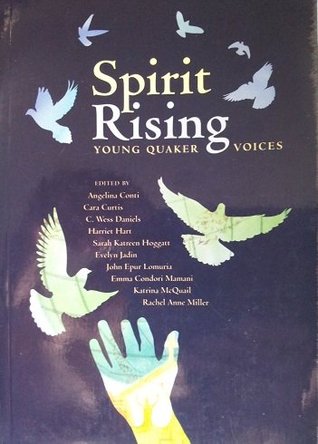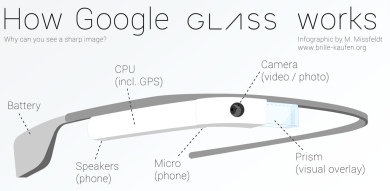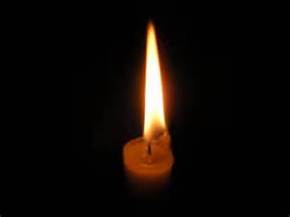Convergent Friends as New Jazz Traditionalists
by Chad Stephenson
as published in Spirit Rising: Young Quaker Voices
 First off, I could not have come up with the title “Convergent Friends as New Jazz Traditionalists” without Martin Kelley who posted a video interview with me on his website, QuakerQuaker.org, and titled it himself. The video captures a mashup idea–that Friends of various strains of Quakerism coming together to revive our common bond of faith and to remind ourselves of our roots and instigate a rebirth was similar to the way jazz music had been reborn in America through reviving its traditions. I was beginning to see the new directions of Quakerism moving beyond its traditions, its fractious past, into a future where Quakers of many backgrounds were beginning to reorient themselves to one another and their shared history, faith traditions, and cultural roots in order to save the faith from demise through its divisions. We were seeing the development of Convergent Friends as new traditionalists, reaching back into the past to reconnect the present, similar to the jazz musician Wynton Marsalis who revived the roots of jazz through his devotion to its traditions, its rich heritage, its distinctive mark on American life by bringing it to a younger audience.
First off, I could not have come up with the title “Convergent Friends as New Jazz Traditionalists” without Martin Kelley who posted a video interview with me on his website, QuakerQuaker.org, and titled it himself. The video captures a mashup idea–that Friends of various strains of Quakerism coming together to revive our common bond of faith and to remind ourselves of our roots and instigate a rebirth was similar to the way jazz music had been reborn in America through reviving its traditions. I was beginning to see the new directions of Quakerism moving beyond its traditions, its fractious past, into a future where Quakers of many backgrounds were beginning to reorient themselves to one another and their shared history, faith traditions, and cultural roots in order to save the faith from demise through its divisions. We were seeing the development of Convergent Friends as new traditionalists, reaching back into the past to reconnect the present, similar to the jazz musician Wynton Marsalis who revived the roots of jazz through his devotion to its traditions, its rich heritage, its distinctive mark on American life by bringing it to a younger audience.
I thought this was a throwaway concept–how could Quakers understand their relationship to jazz and its own divided culture? Yet several Friends responded that the analogy is meaningful and helpful in teasing out the murmurings of “convergent Friends” as a reality coming to fruition. So now I’ll do what all artists do and steal some titles from Wynton Marsalis’ first, self-titled, album back in 1981 (and one from 1986’s Standard Time, Volume 1) to take you to the source of the insight…
 Father Time
Father Time
Just as the Quaker faith has undergone its own web of fissures, splits, and divergences from its beginnings, the jazz world has fractured into many splinters after only an century of history. Arguments have erupted over the true meaning of the origins of jazz and what it encompasses, with its external influences from populism, subculture, Ivy League canonization, evangelism, divergences, strident supporters and rebels seeking new directions for its roots. And why not? Jazz music and Quakerism are flexible, malleable, and full of tensile strength leaving them weather-worn but wide-ranging and inclusive with many points of entry.
Just as Quakerism has done, jazz has grown and developed throughlines that have spidered out since its beginnings in the early 20th century. Jazz music has come to encompass a broad range of stylings and interpretations–Dixieland, orchestras, big bands, modernism, minimalists, fusion, and other variances–as it has made its way through American, and eventually, world cultures. It has developed its own stars and purveyors of each style as well created a few who could find and create their own voice among the gaps between them (notably Duke Ellington, Louis Armstrong, and Miles Davis, among others). Each layer of style was built upon reformation of the past, realigning of ideals measured against the medium and its audience who bought both records and drinks in the clubs which paid the musicians to continue.
Yet, as with Quakerism, its popularity had come and gone and was in constant need for care and revival among the young and restless. A traditionalist would suggest it requires mastery of past standard, a proficiency in the rudiments of the trade, constant practice and discipline, respect and humility in the face of its esteemed past in order to reinterpret it for a modern audience. A new voice, not just a new sound, was needed; yet it had to be a voice that would echo the cherished past enough to build a bridge toward a brighter future.
I’ll Be There When the Time is Right
Has it ever been up to one figure to lead the way for Quakers since the time of George Fox? One person who so embodies the Spirit that encapsulates Quakerism’s core, where disparate groups can unite us? Who has the mastery to mine the depths of historical writings and insights of generations of Quaker leaders?
For jazz, it was Wynton Marsalis who, with his virtuosity, pedigree, and unflagging commitment to his vision of the tenets of jazz, plumbed the depths of its history and returned with its pearls. When I was growing up, I learned the names of historic jazz artists such as Art Blakey and Ron Carter as they were introduced alongside Wynton’s youthful comrades (and autures) on his self-titled debut record. And as Wynton progressed, he brought together the young lions with the aged ones fusing them under his leadership of the revival. I was being re-educated and I didn’t even know it. On his later album, Standard Time: Volume 1 a common standard jazz tune like “Caravan” held the Afro-cuban backbeat mixed with Dixieland that flowed easily into a swing-cadance by a quartet. It wasn’t until years later I learned it was Duke Ellington’s contribution to the American Songbook back in 1936 that Marsalis’s group had reinvigorated for my chaste ears. Wynton had brought about rebirth through mastery of tradition.
As Marsalis materialized everywhere at once during the 1980’s, he brought jazz to the ivoried halls of Lincoln Center (shocking!), became a foil for his own brother, Branford’s, success with a pop musician, Sting, and found an audience among jazz purists such as culture critic Stanley Crouch. He magnetized young aspiring jazz performers together, showcasing the roots of jazz (New Orleans) to eager crowds in rural areas using educational institutions like colleges and universities as his stage. His message was clear–jazz is educational, cultural, life-giving, and for the here-and-now young crowd, if you’re able to handle its complexity and respect its deep cultural signifiance that I’m going to enjoin with you. Now watch this.
His abilities however, proved integratable with the another genre of an aging audience–classical music. Not as a tribute, but as a sign of virtuosity, Marsalis’ classical works include his recordings of Haydn, Mozart, and Tomasi. Embracing classical performances demonstrated that with his talents, Marsalis could speak to two audiences at once–jazz and classical–and ask them to meet one another on each others turf, wooing them to notice each other as two yet-to-be-introduced lovers from across a dance floor.
Will Quakerism experience this ability of unification, of vitality, of re-emergence? What will it take? So far, groups are developing under a term–“convergent Friends”–rather than under an individual. As Robin Mohr pined in her blog What Canst Thou Say? in 2006, the convergent Friends movement is made of “Friends who are seeking a deeper understanding of our Quaker heritage and a more authentic life in the kingdom of God on Earth, radically inclusive of all who seek to live this life.” Blogs and other social networking tools of the Internet are bringing disparate Quakers together via online engagement and creating a place where traditionalists can meet with neo-traditionalists along of international Quakers from major (North America, Britain, Kenya, and Central America) and developing Quaker populations (Korea, Japan).
Hesitation
Marsalis was not without detractors. Reaction to his purist vision and union with other classical music forms was naturally caustic to the prodigious innovators who had moved beyond traditional roots to produce jazz for the times they were in, such as pianists Chick Corea or Herbie Hancock, who had begun producing pop-jazz works ready-made for consumption. During the demise of jazz in the 1970’s and 80’s, as big bands and smaller combos were facing extinction by a marketplace looking for fresh voices beyond standards, new instrumentations and forms were emerging that hardly were recognizable as jazz. Even his own brother, Branford, split with him early in their careers, with Branford persuing the delivery of jazz to the pop-rock world with Sting and a three year run on The Tonight Show (ask any jazz musician under 30 and they’ll know how they thought of a career in jazz might actually become profitable). Wynton’s vision was being called out–if you stick with tradition, where’s your marketplace among the young?
Similarly, throughout Quaker faith, divergence from its roots has brought newer, modern audiences to Quakers and progressed with new pathways while abandoning the shared past commonalities. Yet as a splintered tradition, Quakers have begun to suffer each other as distant relatives do when dining during the holidays; a failing coordination of growth which has led instead to disunity and a lack of understanding and respect for common roots essential to creating a mutually enhancing ecosystem of faith grounded in the Light.
Who Can I Turn To (When Nobody Needs Me)
Just as Quakers do, jazz musicians fear the irrelevancy and demise of their faith. As the audience and practitioners dwindle and devoted attenders begin to gray, as freshness becomes familiarity, as creativity and exploration fall to pandering to crowds or the dumbing down of past disciplines, and current work begins to rest on the laurels of past heroes and achievements, practitioners can become lazy and actions lifeless.
Marsalis offers Quakers a model for evangelism that is unique. He demonstrated that a revival can occur through mastering the roots of tradition with rigorous study and practice. That a revival can occur through showcasing new talent alongside weightier members of the community can join generations. That a revival can occur by finding an audience through the channels which they are attuned to and plugging into them. That revival can occur through seeking the depths of the tradition rather than looking toward outward trends in your audience. That a revival can occur through care and cultivation of a rich heritage of the past. That revival can occur through rediscovery of the past as an alive world still speaking to us today. As he himself points out as a guest lecturer in “Christianity and the U.S. Crisis,” a course at Union Theological Seminary in 2009, Marsalis states, “We [Americans] have failed to identify our arts tradition…we are a nation that is largely ignorant of it…our arts are there, they have been documented, and when we reach for them they are there for us.” He is then followed by another great American thinker, Dr. Cornel West, who points out that educating youth on the roots of their cultural tradition “provides the armor [against majority culture] for them to flower and flourish; and in that sense it is the responsibility of each every one of us. That’s why I like [Marsalis], he is not just a talented artist, he is an evangelist for jazz, he teaches everywhere.”
Caravan (A Slight Return)
However, even a purist such as Marsalis has seen the need to join forces with other one-time traditionalists such cellist Yo Yo Ma, country songwriter Willie Nelson, and bluegrass fiddler Mark O’Connor, in order to join himself to the musical world beyond his own. Among jazz neo-traditionalists, these cooperative projects may be seen as variances or distractions from iconic jazz traditionalist figures such as Duke Ellington on Louis Armstrong among Marsalis neo-tradtionalists, but with Marsalis having demonstrated and established his bonafides, these cooperative projects are more like a council of elders practicing extending their trades to one another to show the world their correlations, how roots of various trees can rebuild a segregated ecosystem.
Convergent Friends face major obstacles, some simple and plain (world languages, geography, time zones), and others more complex (individualized concepts of God and the Biblical texts). Three hundred fifty years of history is nearly impossible to master by a single practitioner of the faith.
Convergent Friends are being offered a chance to bring alive the variances of Quaker faith through correlation of the roots of its past. By knowing one another’s faith traditions and seeing common roots, convergent Friends can build a web of support to nurture a future together. To create a Quaker ecosystem that include all branches of Quakers which would be capable of supporting new life, a new face of Quakerism, which would demonstrate Quakerism’s viability as a growing faith. In today’s world, with Quakerism’s openness and malleability, its ability to breed concepts such as radical inclusiveness or gather a meeting through a blogging community, it’s open-source access to the Light, it offers roots in a faith tradition that fits into a post-modern world. As fellow Quaker, Liz Opp, says in her writings, “I continue to believe that the more firmly rooted we are in our own tradition and belief, the less threatened we will be by those who practice and believe differently from ourselves, and the more open we will be to learn from one another without fear of being assimilated, converted, or imposed upon.”
Amen, as a Friend might say.
Or as a new jazz traditionalist would conclude, “Thank you, and good night.”

